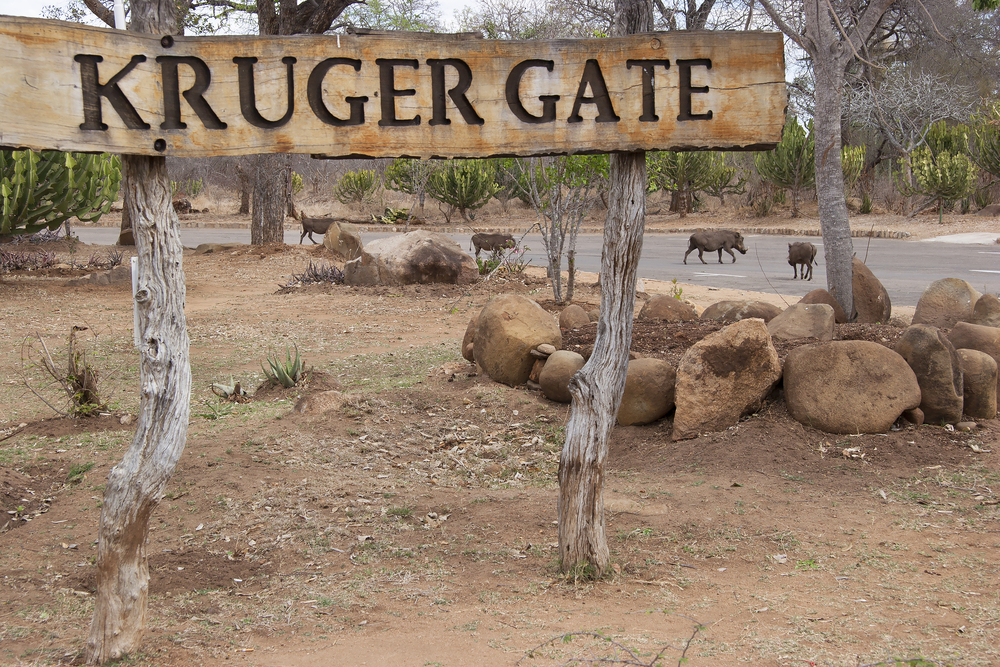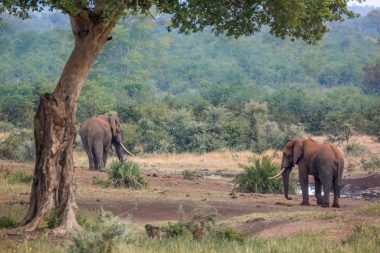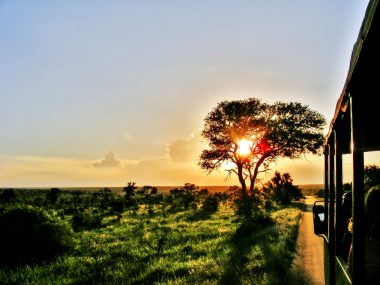
The African continent is still not necessarily the focus of global travel routes. But this continent has a lot to offer, for example impressive landscapes and fascinating natural diversity. There are few better places to discover this nature than the Kruger National Park in South Africa. This protected area is not only quite easy to travel, it also offers everything you could hope for in terms of impressions from a trip to Africa.

The Kruger National Park is located in the north of South Africa and takes its name from Paul Kruger, who as the then South African president had a nature reserve established here in 1898. It covers a total of around 20,000 km² and borders the Limpopo National Park in neighbouring Mozambique. In the long term, the two areas and the nearby Gonarezhou National Park in Zimbabwe are to be merged into a single, cross-border protected area.
However, visitors can already expect wide open spaces and a surprisingly large number of different landscapes. Within the park there are savannahs and wooded areas, grassy plains and mountains. Several rivers cross the area and provide green aisles with somewhat denser vegetation, even though many of the rivers have mostly dried up. This diversity and the vastness of the park mean that it is not a destination for a short trip, you should bring a little time. This is even more true if you spend your holiday in other places in South Africa . The connection of the park to the network of highways is good, but from Johannesburg it takes about four hours to drive to the park entrance and Cape Town is even twenty hours away by car. Some airlines have flight connections from these cities in their program, and there are several small airfields around the national park.
The Big Five in the wild
But the journey is definitely worth it, even if it can take a little longer. The Kruger National Park is one of the most famous national parks in the world and offers arguably the best opportunity to get to know Africa’s fascinating wildlife. The animals that live here include elephants, giraffes, lions, zebras, hippos, rhinos, wildebeests and many others. The best represented species in terms of numbers are impalas, whose population is estimated at well over 100,000 animals.
And while mammal species naturally attract most of the attention, Kruger National Park is also home to amphibians and reptiles, several hundred species of birds including ostriches and vultures, and even several different species of fish. While some species, such as the rhinoceros, are becoming the target of poachers despite the protection in the park and are therefore decimated in their population, there are even growing populations of others. A few years ago, for example, several hundred elephants were brought to a protected area in Mozambique, but the animals migrated back without further ado.
Safari tour of the Kruger National Park

The animals and the opportunity to collect unforgettable impressions are of course the most important arguments for a visit to the Kruger National Park. You have a largely free hand. The safari tours, which can be booked in the park’s information centres, are very popular. The advantage of these tours is on the one hand the expert guidance with a lot of interesting information by the guides, and on the other hand the fact that the vehicles used for this are higher than normal cars. This is particularly interesting for amateur photographers, because it gives a better view of the animals hiding behind grass. However, it is not obligatory to take advantage of the guided tours. Instead, most visitors drive through the national park in their own cars.
This is also easily possible and not difficult at all. The roads are well developed and passable and orientation is not difficult. Maps are available at the entrance to the park, in which both the streets and the favorite places of various animal species are listed. The whole thing costs a daily fee of the equivalent of just under 20 euros per person. Apart from exploring the park by car, there are also hikes led by the park rangers that allow for a very special approach to nature. These hikes are also the only occasions when you are allowed to walk in the park, otherwise leaving the car is strictly prohibited. Many a visitor has forgotten that the Kruger National Park is home to a whole host of predators.
Apart from such encounters, which are fortunately extremely rare, the Kruger National Park is a very safe destination. The streets are leisurely and you are also safe in the accommodations because the whole area offers hardly any escape routes. Keyword accommodation: Although there are so-called camps everywhere in the park, where you can find overnight accommodation, restaurants and some shops, the beds are quickly all taken, especially in the high season. A timely reservation through the national park administration is therefore definitely recommended.
Important information about the Kruger National Park
The Kruger National Park covers almost 20,000 square kilometers and is located in the northeast of South Africa, bordering Mozambique and Zimbabwe. The park is part of the Great Limpopo Transfrontier Park, a cross-border nature reserve that also includes parts of neighboring countries.
Climate
The Kruger National Park experiences a subtropical climate with two main seasons: the dry winter period (May to September), which is ideal for game viewing as the animals come to the watering holes, and the wetter summer period (October to April), when the landscape is lush and green, but the animals are more difficult to see. Summers can be very hot, especially from December to February.
Sights
- Game viewing: The park is home to the “Big Five” (lion, leopard, rhino, elephant, buffalo) as well as an impressive variety of other wildlife, including giraffes, zebras, hyenas and various antelope species.
- Birdwatching: With over 500 species of birds, the Kruger National Park is a birdwatcher’s paradise.
- Bush Walks and Safari Drives: Guided walks and drives, often at sunrise or sunset, offer the opportunity to get up close and personal with wildlife.
- Restcamps and lodges: The park offers a variety of accommodations, from luxury lodges to simpler camp facilities.
Activities
- Photography: The park is a dream destination for wildlife photography.
- Safari drives: Both self-guided tours and ranger-led safaris are available.
- Cultural Tours: Some tours offer insight into the local culture and history of the communities living in the area.
Culture
The park and surrounding areas are also culturally significant, with a rich history of the local Tsonga, Shangaan and other ethnic groups. There are also historical sites such as petroglyphs to explore.
Gastronomy
At the rest camps and lodges, visitors can enjoy local South African cuisine, including dishes such as biltong (dried meat), bobotie (a spicy casserole) and traditional braai (South African barbecue).
Journey
The Kruger National Park is accessible via several entrances, with the nearest major airports in Nelspruit and Phalaborwa. Many visitors come to Johannesburg by plane and then drive to the park by car, which takes about 5-6 hours.

